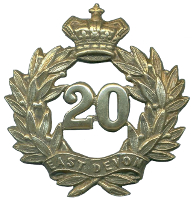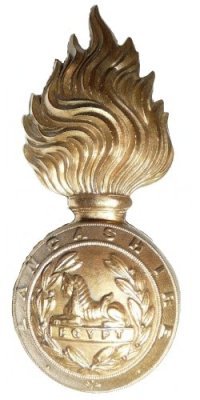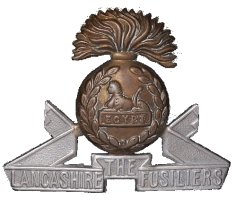
Regiment of Foot
│
│
│
│
│
│
│
│
│
│
│
│
│
│
│

│
Regiment of Foot
│
│
│
│
│
│

│

│


│

│
│
│
│
│
| part of The Lancastrian Brigade |
│
│
| transferred to The Fusilier Brigade |

│
The Royal Regiment of Fusiliers
| part of The Queen’s Division |
 |
||
| Kingdom of England | ||
| 1688: | Robert Peyton’s Regiment of Foot │ |
|
| 1789: | Viscount Boyne’s │ |
|
| 1706: | John Newton’s │ |
|
| 1707: | Kingdom of Great Britain | |
| │ | ||
| 1714: | Thomas Meredith’s │ |
|
| 1719: | William Egerton’s │ |
|
| 1732: | Earl of Effingham’s │ |
|
| 1737: | Richard St. George’s │ |
|
| 1740: | Alexander Rose’s │ |
|
| 1740: | Thomas Bligh’s │ |
|
| 1746: | Viscount Sackville’s │ |
|
| 1749: | Earl of Albemarle’s │ |
|
| 1751: | 20th Regiment of Foot │ │ |
|
| 1756: | 2nd Bn raised │ |
|
| 1758: | 2nd Bn → 67th Foot │ |
|
│ │ |
||
| 1782: | 20th (East Devonshire) Regiment of Foot │ |
|
| 1799: | 2nd Bn raised │ |
|
| 1801: | United Kingdom of Great Britain and Ireland | |
| │ | ||
| 1802: | 2nd Bn disbanded │ |
|
| 1842: | Reserve Bn raised │ |
|
| 1849: | Reserve Bn disbanded │ |
|
| 1858: | 2nd Bn raised │ |
|
 │ |
||
 │ |
||
| The creation of the territorial regiments by the Childers reforms | ||
| │ | ||
 |
||
| 1881: | 1st Bn, 2nd Bn, | |
| The Lancashire Fusiliers | ||
 │ |
||
 │ |
||
| 1898: | 3rd Bn raised │ |
|
| 1900: | 4th Bn raised │ |
|
| 1906: | 3rd Bn and 4th Bn disbanded │ |
|
| 1922: | United Kingdom of Great Britain and Northern Ireland | |
| │ | ||
| 1948: | 2nd Bn disbanded │ |
|
| 1948: |
|
|
| 1952: | 2nd Bn raised │ |
|
| 1955: | 2nd Bn disbanded │ |
|
| 1958: |
|
|
| │ | ||
 │ |
||
| 1968: | 4th Battalion, The Royal Regiment of Fusiliers |
|
|
||
| 1969: | disbanded | |